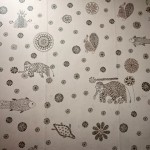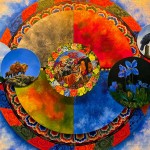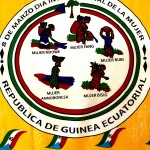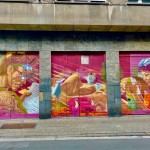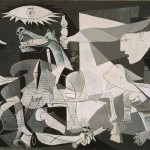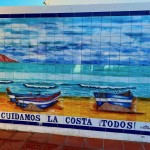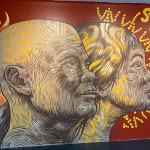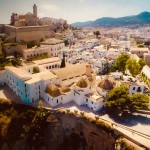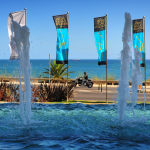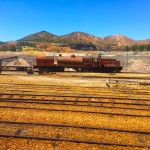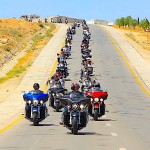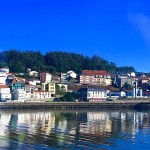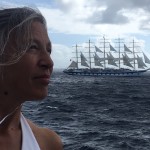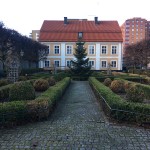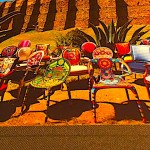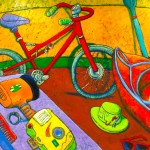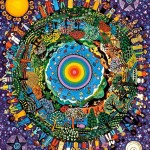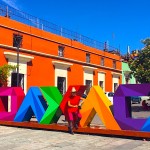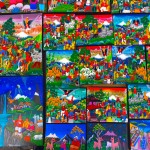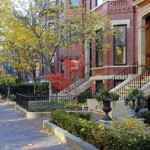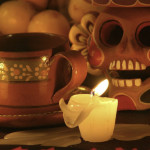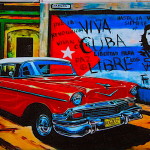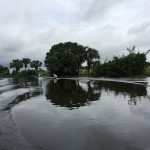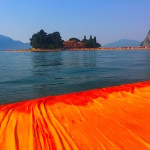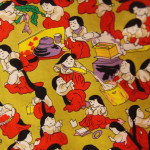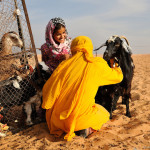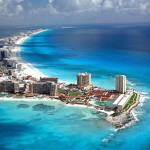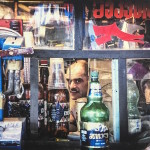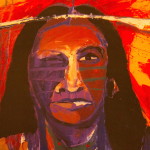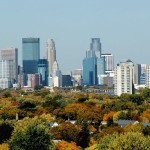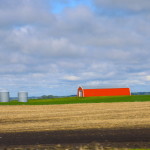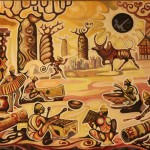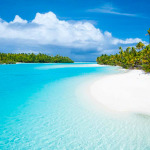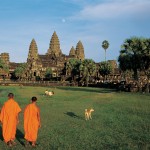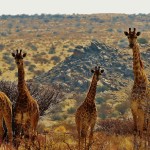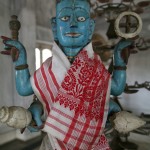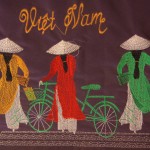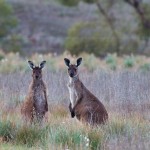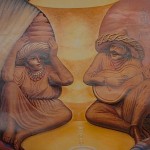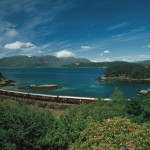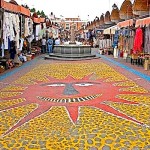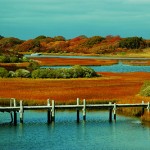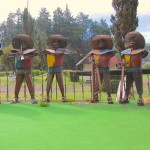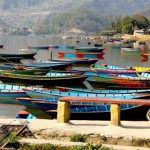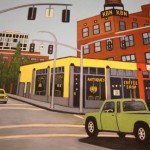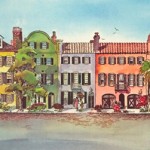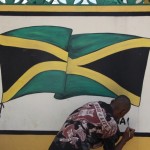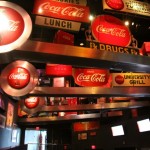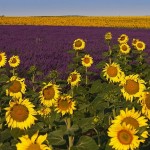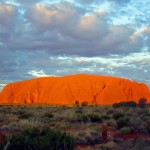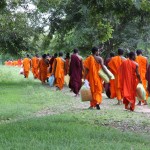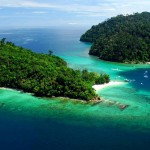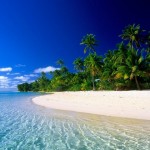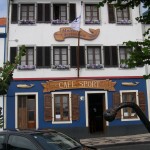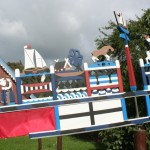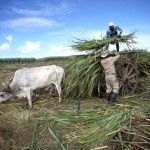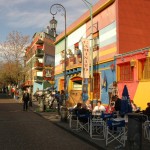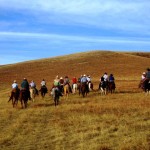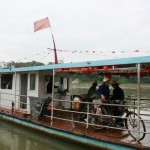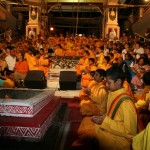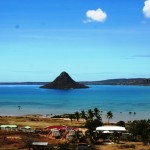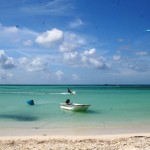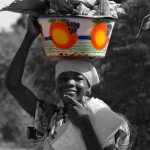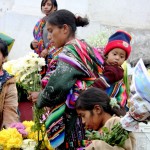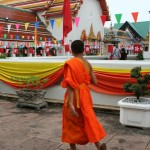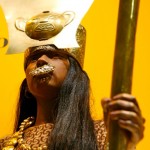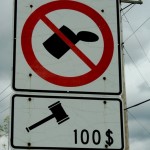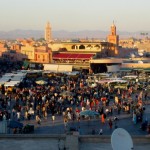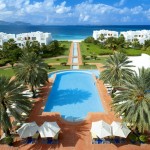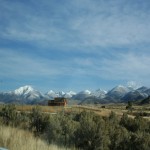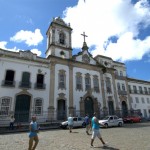Bangladesh, land of Mujib. This is read as soon as you land at Dhaka airport. But who is Mujib then? He is a popular revolutionary leader assassinated in 1975, founder of Bangladesh because thanks to him this land was never again called East Pakistan, but Bangladesh.
The first impression is the chaos that reigns on the roads and for those who don’t expect it, it can be frightening, although it is the classic “ingredient” of many Asian nations, including, for example, neighboring India. During traffic hours, every motorized road vehicle proceeds leaving only millimeters of space between itself and the other vehicle, horns blare from every direction, and the so-called CNGs, a sort of Ape where the traveler is literally locked up in a cage, are the undisputed protagonists.
In addition, he travels on the left, as in England, so you also have to be careful when crossing roads.
But all of this is part of the folklore and adventure of choosing to visit Bangladesh, a Nation mostly unknown to Europeans, a country that have so many rivers to be better known (sadly) for its floods.
And we have experienced it: in Bangladesh even a day of torrential rain can become an experience, strange but such, where you can observe that nothing stops there, not even pedestrians without umbrellas who continue walking in the rain and will then dry in the air as soon as it will stop raining.
Dhaka is the capital of Bangladesh. And it is a very chaotic capital in all respects, perhaps political, social, ecological primarily.
There are several theories about the origin of the name of this capital. Among them, the one that claims that the name Dhaka comes from the establishment of the temple of Goddess Dhakeshwari by Raja Ballal Sea in the 12th century. Another theory says that in an ancient text this part of the land was known as Dhaka, as this word meant an observation tower.
In search of the past and the splendor of Dhaka, we went as far as the iconic architecture of the National Parliament Building and, above all, the neo-Indian Saracen architecture of the beautiful Ahsan Manzil museum.
These two palaces, together with the Lalbag Fort, are the must-sees of this capital.
We are in the heart of an Islamic nation, where alcohol is not served even in hotels (or almost, because in some luxur’s hotel we have seen the bottles on display), a nation where 5 times a day (at dawn, at noon, in the afternoon, at sunset, in the evening) on the street you can hear the muezzin calling the faithful to prayer over the loudspeakers.
A nation where the linear beauty of the elements can be admired inside (not outside) the Sitara Mosque which is located in old Dhaka, (a mosque simply called Star due to cacophonous resemblance).
Here the Koran is law, although other types of spirituality are also encountered.
It is the story of the Dhakeshwari Temple, interesting because it became an official recognition of the Hindu religion following the declaration of Islam as the religion of this state in 1988.
And, regardless of which religion you will profess, we liked the church of the Holy Rosary built by the Augustinian missionaries at the end of the 12th century and doubled in size because it was very busy. Laterally there is a delightful cemetery with dozens and dozens of white crosses and in 2017 Pope Francis celebrated Mass here.
If, on the other hand, you want to live an experience out of time, go to the Port and take a boat trip on the Buriganga Sadarghat river; the boats that go by sea to neighboring countries also leave from the port, but renting one of their wooden boats and traveling slowly for a few hours observing how the locals live will surprise you.
Wherever you are headed, as soon as you start sailing you can notice, on the opposite bank, a cemetery of huge abandoned boats.
From Dhaka, there are some really easy day trips to do.
The first destination is about half an hour by road from Dhaka, and is Sonargaon, the ancient capital of Bangladesh. It is a hilly city and has a diverse history spanning time, through Hindu, Mughal and British rule. Sonargaon is located in the center of the Ganges Delta near the river port of Narayanganji. The palace on the water is very suggestive, also the heart of the visits. Sonargaon is one of the oldest capitals of Bengal.
The second destination is in Savar, only 35 kilometers away, but no less than 90 minutes of travel (you always have to consider the enormous traffic during the day).
And, it may sound curious, but we were glad we chose to see the Jatiyo Sriti Shoudho, the National Martyrs’ Memorial dedicated to those who lost their lives during the Bangladesh Liberation War in 1971. It’s a fascinating piece of tall architecture 150 meters set in a well-kept garden inaugurated in 1982. As proof of the still current importance of this monument, we met Bangladeshis coming here from all over the Country.
For those who have more days and want to get out of the capital, we suggest two places above all.
The first is the Sixty Dome mosque which is located in Bagerhat, about 200 km from Dhaka, and is a UNESCO World Heritage Site, begun in 1442 and completed 17 years later, in 1459.
And then it’s worth going to see the coast of Bangladesh and, perhaps, the city of Chittangong 250 km far, is the most emblematic for the beaches. That of Cox’s Bazar is one of the longest natural beaches, the fifth in the world with its 120 kilometers of shoreline.
For those who decide do not go out of Dhaka, the modern part with its bridges and skyscrapers presents opportunities, in particular the Aarong mall area, perfect for those who want to go shopping. The smaller Mall Aarong than the famous Jimuna Future Park mall, but has a decidedly more glamorous atmosphere. Among other things, immediately after the Aarong mall there is the Terra Cotta restaurant (despite the name it is not an Italian restaurant), a real gem for those who want to taste recipes from Bangladeshi, or fusion cuisine, we really found good food in an international ambience.
Nearby there is both the Military Museum, a pleasant visit for how it has been set up inside, and the Cinema where they also offer films in English. In that semi-circular indoor walk, in front of the scenography of a military submarine in the water, you will find yourself surrounded by the “hight society” of Bangladesh, women and men dressed in a luxurious way with clothes by Bangladeshi designers emerging, even internationally. This too, absolutely to be experienced.
ITALIANO: Bangladesh, terra di Mujib. Questo si legge appena si atterra all’aeroporto di Dhaka. Ma chi è quindi Mujib? È un rivoluzionario leader popolare morto assassinato nel 1975, fondatore del Bangladesh perché grazie a lui questa terra non è mai più stata chiamata East Pakistan, ma Bangladesh.
La prima impressione è il caos che regna sulle strade e per chi non se lo aspetta può spaventare, sebbene sia “l’ingrediente” classico di molte nazioni asiatiche. Nelle ore di traffico, ogni mezzo stradale a motore procede lasciando soltanto millimetri di spazio tra se e l’altro mezzo, i clacson impazzano da ogni direzione, e i cosiddetti CNG, una sorta di Ape dove il viaggiatore viene letteralmente rinchiuso in gabbia, sono i protagonisti indiscussi.
In più, si viaggia a sinistra, come accade in Inghilterra, quindi bisogna anche fare attenzione ad attraversare le strade.
Ma tutto questo fa parte del folklore e dell’avventura di scegliere di visitare il Bangladesh, una nazione per lo più sconosciuta agli europei, o, visto che ha tantissimi fiumi, conosciuta (tristemente) soprattutto per le sue inondazioni.
Noi abbiamo sperimentato che in Bangladesh un giorno di pioggia torrenziale può diventare un’esperienza, strana, ma tale. Abbiamo osservato che lì nulla si ferma, nemmeno i pedoni senza ombrello che continuano a camminare sotto la pioggia e si asciugheranno poi all’aria non appena smetterà di piovere.
Dhaka è la capitale del Bangladesh. Ed è una capitale quantomai caotica, in tutto e per tutto.
Sull’origine del nome di questa capitale, esistono diverse teorie. Tra queste, quella che sostiene che il nome Dhaka arrivi dall’istituzione del tempio della Dea Dhakeshwari di Raja Ballal Sea nel 12esimo secolo. Un’altra teoria racconta che in un antico testo questa parte di terra era conosciuta come Dhaka, in quanto con questa parola si intendeva torre di osservazione.
Alla ricerca del passato e dello splendore di Dhaka, ci siamo spinti fino all’architettura iconica del Palazzo del Parlamento Nazionale e, soprattutto, a quella neo indio saracena del bellissimo museo Ahsan Manzil.
Questi due palazzi, assieme al Forte di Lalbag, sono le visite imperdibili in questa capitale.
Siamo nel cuore di una nazione islamica, dove non vengono serviti alcolici nemmeno negli hotel (o quasi, perché in alcuni abbiamo visto le bottiglie in bella mostra), una nazione dove 5 volte al giorno (all’alba, a mezzogiorno, al pomeriggio, al tramonto, alla sera) per strada si sentono i talacimanni che dagli altoparlanti invitano i fedeli alla preghiera.
Una nazione dove la bellezza lineare degli elementi si ammira soprattutto dentro (e non fuori) la Moschea Sitara, per somiglianza cacofonica detta semplicemente Star, che è situata nella vecchia Dhaka.
Qui il Corano è legge, ma si incontra anche altra spiritualità.
È la storia del Tempio di Dhakeshwari, interessante perché è diventato un riconoscimento ufficiale della religione Indù nel 1988 proprio in seguito alla dichiarazione dell’Islam come religione di questo stato.
E, indipendentemente da quale religioni si professi, a noi è piaciuta la chiesa del Santo Rosario costruita dai missionari agostiniani alla fine del XII secolo e doppiata come dimensioni perché molto frequentata. Lateralmente c’è un delizioso cimitero di decine e decine di croci bianche e nel 2017 qui ha celebrato Messa anche Papa Francesco.
Se volete, invece, vivere una esperienza fuori dal tempo, andate al Porto e fate una gita in barca sul fiume Buriganga Sadarghat; dal Porto partono anche le barche che vanno via mare nelle nazioni limitrofe, ma affittare una delle loro imbarcazioni di legno e viaggiare lentamente per qualche ora osservando come vivono i locali, vi sorprenderà.
Ovunque sarete diretti, appena iniziate la navigazione notate, sulla riva opposta, un cimitero di enormi barche abbandonate.
Partendo da Dhaka, ci sono alcune gite davvero facili da realizzare in giornata.
La prima è a circa mezz’ora di strada da Dhaka, ed è Sonargaon, l’antica capitale del Bangladesh. E una città collinare e ha una storia diversificata che abbraccia il tempo, attraverso il dominio indù, moghul e britannico. Sonargaon si trova al centro del delta del Gange vicino al porto fluviale di Narayanganji in Bangladesh. Molto suggestivo il palazzo sull’acqua, anche cuore delle visite. Sonargaon d’altronde è una delle capitali più antiche del Bengala.
La seconda è a Savar, a circa 35 chilometri, ma non meno di 90 minuti di viaggio (perché bisogna sempre considerare l’enorme traffico diurno).
Può apparire curioso, ma siamo stati contenti di avere scelto di vedere il Jatiyo Sriti Shoudho, il Memoriale nazionale dei Martiri dedicato a coloro che hanno perso la vita durante la guerra di liberazione del Bangladesh nel 1971. Si tratta di un affascinante pezzo di architettura alto 150 metri messo dentro un giardino ben curato inaugurato nel 1982.
Per chi dispone di più giorni e vuole uscire dalla capitale, suggeriamo due luoghi su tutti.
Il primo è la moschea Sixty Dome che si trova a Bagerhat, circa 200 km da Dhaka, ed è Patrimonio Unesco, iniziata nel 1442 è stata completata 17 anni più tardi, nel 1459.
E poi vale andare a vedere la costa del Bangladesh. Forse la città di Chittangong è la più emblematica per le spiagge. Siamo a 250 km da Dhaka e la spiaggia Bangladese di Cox’s Bazar è una delle spiagge naturali tra le più lunghe, la quinta al mondo con i suoi 120 chilometri di bagnasciuga.
Per chi decide di restare a Dhaka, la parte moderna con i suoi ponti e i suoi grattacieli presenta delle opportunità, in particolare l’area del mall Aarong, perfetto per chi vuole fare shopping. Questo mall è più piccolo del famoso mall Jimuna Future Park, ma è decisamente più glamour come atmosfera. Tra l’altro, subito dopo il mall Aarong c’è il ristorante Terra Cotta (nonostante il nome non è un ristorante italiano), una vera chicca per chi vuole degustare ricette della cucina bangladese o fusion, abbiamo trovato del buon cibo in un ambiente internazionale.
Nelle vicinanze c’è sia il Museo Militare, una visita piacevole per come è stato impostato al suo interno, sia il Cinema dove propongono anche film in lingua inglese. In quella passeggiata semicircolare al coperto, davanti alla scenografia di un sottomarino militare in acqua, vi troverete attorniati dalla “hight society” del Bangladesh, donne e uomini vestiti in modo lussuoso con abiti di stilisti Bangladesi che stanno emergendo alla ribalta, anche internazionale. Anche questo, assolutamente da sperimentare.
ESPAÑOL: Bangladesh, tierra de Mujib. Esto se lee tan pronto como aterrizas en el aeropuerto de Dhaka. Pero, ¿quién es Mujib entonces? Es un líder revolucionario popular asesinado en 1975, fundador de Bangladesh porque gracias a él esta tierra nunca más se llamó East Pakistan, sino Bangladesh.
La primera impresión es el caos que reina en las carreteras y para quien no se lo espera puede resultar aterrador, aunque es el clásico “ingrediente” de muchas naciones asiáticas, incluida, por ejemplo, la vecina India. Durante las horas de tránsito, cada vehículo de carretera motorizado avanza dejando solo milímetros de espacio entre él y el otro vehículo, las bocinas suenan en todas direcciones y los llamados GNC, una especie de Ape donde el viajero está literalmente encerrado en una jaula, son los protagonistas indiscutibles.
Además, se circula por la izquierda, como en Inglaterra, por lo que también hay que tener cuidado al cruzar carreteras.
Pero todo esto es parte del folclore y la aventura de elegir visitar Bangladesh, una nación mayoritariamente desconocida para los europeos o, al tener tantos ríos, más conocida (tristemente) por sus inundaciones. Sin embargo, lo hemos vivido: en Bangladesh hasta un día de lluvia torrencial puede convertirse en una experiencia, rara pero tal, donde se puede observar que nada se detiene ahí, ni siquiera los peatones sin paraguas que siguen caminando bajo la lluvia y luego se secan en el aire tan pronto como deja de llover.
Dhaka es la capital de Bangladesh. Y es una capital muy caótica, en todos los aspectos.
Hay varias teorías sobre el origen del nombre de esta capital. Entre ellos, el que afirma que el nombre Dhaka proviene del establecimiento del templo de la Diosa Dhakeshwari por Raja Ballal Sea en el siglo XII. Otra teoría dice que en un texto antiguo esta parte de la tierra se conocía como Dhaka, ya que esta palabra significaba una torre de observación.
En busca del pasado y el esplendor de Dhaka, llegamos hasta la arquitectura icónica del edificio del Parlamento Nacional y, sobre todo, la arquitectura neoindia sarracena del hermoso museo Ahsan Manzil.
Estos dos palacios, junto con el Fuerte de Lalbag, son los imprescindibles de esta capital.
Estamos en el corazón de una nación islámica, donde no se sirve alcohol ni en los hoteles (o casi, porque en algunos hemos visto las botellas expuestas), una nación donde 5 veces al día (al amanecer, al mediodía, en la tarde, al atardecer, por la noche) en la calle se puede escuchar al muecín llamando a los fieles a la oración por los altavoces.
Una nación donde la belleza lineal de los elementos se puede admirar sobre todo en el interior (más que en el exterior) de la Mezquita de Sitara, llamada simplemente Estrella por su cacofónica semejanza, que se encuentra en la antigua Dhaka.
Aquí el Corán es ley, pero también se encuentran otras espiritualidades.
Es la historia del Templo Dhakeshwari, interesante porque se convirtió en un reconocimiento oficial de la religión hindú tras la declaración del Islam como religión de este estado en 1988.
Y, independientemente de la religión que profeses, nos gustó la iglesia del Santo Rosario construida por los misioneros agustinos a finales del siglo XII y duplicada en tamaño porque estaba muy concurrida. Lateralmente hay un delicioso cementerio de decenas y decenas de cruces blancas y en 2017 el Papa Francisco también celebró misa aquí.
Si por el contrario quieres vivir una experiencia fuera del tiempo, acércate al Puerto y haz un paseo en barco por el río Buriganga Sadarghat; Los barcos que van por mar a los países vecinos también salen del puerto, pero alquilar uno de sus barcos de madera y viajar lentamente durante unas horas observando cómo viven los lugareños te sorprenderá.
Vayas donde vayas, nada más empezar a navegar te das cuenta, en la orilla opuesta, de un cementerio de enormes barcos abandonados.
Y desde Dhaka, hay algunas excursiones de un día muy fáciles de hacer.
El primero está a una media hora por carretera desde Dhaka, y es Sonargaon, la antigua capital de Bangladesh. Es una ciudad montañosa y tiene una historia diversa que abarca el tiempo, a través del dominio hindú, mogol y británico. Sonargaon se encuentra en el centro del delta del Ganges, cerca del puerto fluvial de Narayanganji en Bangladesh. El palacio sobre el agua es muy sugerente, también el corazón de las visitas. Sonargaon es una de las capitales más antiguas de Bengala.
La segunda está en Savar, a unos 35 kilómetros, pero nada menos que 90 minutos de viaje (porque siempre hay que tener en cuenta el enorme tráfico durante el día).
Puede sonar curioso, pero nos alegramos de haber elegido ver el Jatiyo Sriti Shoudho, el Monumento Nacional a los Mártires dedicado a aquellos que perdieron la vida durante la Guerra de Liberación de Bangladesh en 1971. Es una pieza fascinante de arquitectura alta de 150 metros ubicada en un cuidado jardín inaugurado en 1982.
Para los que disponen de más días y quieren salir de la capital, sugerimos dos lugares sobre todo.
La primera es la mezquita Sixty Dome que se encuentra en Bagerhat, a unos 200 km de Dhaka, y es Patrimonio de la Humanidad por la UNESCO, se inició en 1442 y se completó 17 años después, en 1459.
Y luego vale la pena ir a ver la costa de Bangladesh. Quizás la ciudad de Chittangong sea la más emblemática en cuanto a playas. Estamos a 250 km de Dhaka y la playa bangladesí de Cox’s Bazar es una de las playas naturales más largas, la quinta del mundo con sus 120 kilómetros de costa.
Para aquellos que deciden quedarse en Dhaka, la parte moderna con sus puentes y rascacielos presenta oportunidades, en particular el área del centro comercial Aarong, perfecto para aquellos que quieren ir de compras. Este centro comercial es más pequeño que el famoso centro comercial Jimuna Future Park, pero tiene un ambiente decididamente más glamoroso. Entre otras cosas, inmediatamente después del centro comercial Aarong está el restaurante Terra Cotta (pese al nombre no es un restaurante italiano), una auténtica joya para los que quieran degustar recetas de la cocina bangladeshí o fusión, encontramos buena comida en un restaurante internacional. .
Muy cerca se encuentra tanto el Museo Militar, una visita agradable por cómo ha sido ambientado en su interior, como el Cine donde también ofrecen películas en inglés. En ese paseo interior semicircular, frente a la escenografía de un submarino militar en el agua, te encontrarás rodeado de la “alta sociedad” de Bangladesh, mujeres y hombres ataviados de forma lujosa con prendas de diseñadores bangladesíes que son emergiendo en el centro de atención, incluso a nivel internacional. Esto también, absolutamente para ser experimentado.



